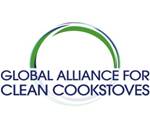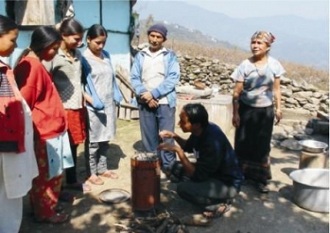The Effect of Solar Ovens on Fuel Use, Emissions, and Health: Results from a Randomized Controlled Trial, 2011.
David I. Levine, Haas School of Business, University of California, Berkeley
Theresa Beltramo, School of Advanced Studies in Venice (SSAV)
Inefficient cookstoves contribute to deforestation and global climate change, require substantial time (usually of women and girls) or money for fuel, and lead to over 1.5 million deaths a year from smoke exposure. We ran a randomized controlled trial in rural Senegal to measure how solar ovens affect wood usage, time spent collecting wood, carbon monoxide exposure, and respiratory illness symptoms. In the sixth month of owning the stove, women in the treatment group used their oven about 19% of days. However, because 80% of our respondents typically cook for more people than the capacity of the solar oven, even cooks using the solar oven always had a fire going at the same time. On average, treatment households did not have statistically significantly lower fuel consumption, time spent collecting fuel, or time spent next to the cook fire. There is no evidence solar ovens reduce exposure to carbon monoxide or self-reported respiratory symptoms such as coughs and sore throats.
A Recipe for Success? Randomized Free Distribution of Improved Cooking Stoves in Senegal, 2012.
Gunther Bensch and Jörg Peters. Ruhr-Universität Bochum (RUB), Department of Economics.
Today more than 2.7 billion people rely on biomass as their primary cooking fuel, with profound implications for the environment and people’s well-being. Wood provision is often time-consuming and the emitted smoke has severe health eff ects – both burdens that afflict women in particular. The dissemination of Improved Cooking Stoves (ICS) is frequently considered an eff ective remedy for these problems. This paper evaluates the take-up of ICS and their impacts through a randomized controlled trial in rural Senegal.
Although distributed for free, the ICS are used by almost 100 % of households. Furthermore, we find substantial effects on firewood consumption, eye infections, and respiratory disease symptoms. These findings substantiate the increasing efforts of the international community to improve access to improved cooking stoves and call for a
more direct promotion of these stoves.
Cleaner Hearths, Better Homes:New Stoves for India and the Developing World, 2012.
Douglas F. Barnes, Priti Kumar, Keith Openshaw. ESMAP.
Cleaner Hearths, Better Homes: New Stoves for India and the Developing World has a twofold goal: describing India’s best legacy improved biomass stove programs and recommending ways in which the international community can promote stoves that are commercially viable, convenient for users, and more energy efficient. By implication, there also would be a reduction of indoor air pollution to more reasonable levels than is common today. To date, the effectiveness of many of the world’s stove programs has been hindered by their small scale. Even India’s best case examples faced serious challenges. But hard-learned lessons from these cases, combined with varied experience from stove programs around the world, can well serve the international development community’s ef orts to address the energy problems faced by the poorest populations on our planet.
Contents
1. Better Stoves and Household Fuel Use 1
2. India’s Best Legacy Improved Stove Programs 17
3. Maharashtra: Commercial Approach 24
4. Haryana: Women’s Involvement 36
5. Karnataka: Technical Innovations and Institutions 50
6. Gujarat: Rural Development Approach 64
7. Andhra Pradesh: Interagency Coordination 78
8. West Bengal: Nongovernmental Organizations 95
9. A New Path for Better Stoves 114
WHO’s Global Health Observatory Data Repository maintains statistics on:
- Household air pollution
- Exposure
- Population using solid fuels (reported data)
- Solid cooking fuels (raw data)
- Non-solid cooking fuels (raw data)
- Other cooking fuels (raw data)
- Burden of disease
Link: http://apps.who.int/ghodata/?vid=34000
Grieshop, A. P., Marshall, J. D., and Kandlikar, M. (2011). “Health and climate benefits of cookstove replacement options.” Energy Policy, 39(12), 7530-7542.
The health and climate impacts of available household cooking options in developing countries vary sharply. Here, we analyze and compare these impacts (health; climate) and the potential co-benefits from the use of fuel and stove combinations. Our results indicate that health and climate impacts span 2 orders of magnitude among the technologies considered.
Indoor air pollution is heavily impacted by combustion performance and ventilation; climate impacts are influenced by combustion performance and fuel properties including biomass renewability. Emission components not included in current carbon trading schemes, such as black carbon particles and carbon monoxide, can contribute a large proportion of the total climate impact.
Multiple ‘improved’ stove options analyzed in this paper yield roughly equivalent climate benefits but have different impacts on indoor air pollution. Improvements to biomass stoves can improve indoor air quality, which nonetheless remains significantly higher than for stoves that use liquid or gaseous hydrocarbons. LPG- and kerosene-fueled stoves have unrivaled air quality benefits and their climate impacts are also lower than all but the cleanest stoves using renewable biomass.
Muthiah: Time is Right, Time is Now for Clean Cookstoves
Washington Post Story Overlooks Many Facts, Wrongly Concludes Timing is Wrong for Worldwide Cookstove Movement
Washington, DC (April 19, 2012) – Radha Muthiah, Executive Director of the Global Alliance for Clean Cookstoves, issued the following statement today in response to Brian Palmer’s April 17th Washington Post story, ‘Too many Cookstoves spoil the effort to cut indoor pollution’:
“Despite the misleading title, the Post article correctly identifies the scourge of cooking on open fires and rudimentary cookstoves as a global health problem that demands urgent attention, highlighting World Health Organization data that shows indoor air pollution kills 2 million people every year. 
“Regrettably, the article seems to indicate that clean cookstoves do not deliver measurable health impacts and therefore concludes that ‘we are not yet ready to distribute clean cookstoves worldwide.’
“Nothing could be further from the truth. On the contrary, the timing for clean cookstoves is right, and the time is now.
“The reporter’s misinformed conclusion, which has implications globally, was reached by looking at a few studies, including a very specific research project entitled Up in Smoke that focuses on improved cookstoves in 44 Indian villages. Some of the results of this particular study demonstrate that certain improved stoves did not significantly reduce indoor air pollution, specifically, black carbon.
[click to continue…]
Editor, Washington Post, April 18, 2012
Have you heard the story about the economist who was asked what he would do if washed ashore on a desert island? — “I would pick up a rock and assume it was a radio”
The so-called “improved” stove in the Indian study reported on by Brian Palmer (“Too many cookstoves spoil the effort to cut indoor air pollution” April 17) was not clean in any important way and so of course did not improve health. It was a simple local stove that did not change combustion to reduce smoke. Unfortunately, many NGOs and other well-intentioned groups involved in stove dissemination are convinced by their own rhetoric and at most a few lab tests that their stove is truly improved and will be adopted even though they do no systematic field testing to show it works well in practice or will be used by people over time.
The lesson learned long ago is that “you don’t get what you expect, but what you inspect” Just calling something “improved” (or a radio) does not make it so.
The word “improved” is a marketing trick with a long history. Half the products on shop shelves all over the world are called “improved.” Maybe the box or color is changed, but the word works by tricking us into buying things with the assumption that it is improved in a way that is meaningful to us without the seller having to actually show that it does. Adding “improved” to the label of products gives you a bump in sales every time – which is why it is done. But it does not make them into radios.
In contrast, before our RESPIRE study mentioned in the article we spent eight years in Guatemala, actually measuring stove performance and use. We proved that our stove lowered indoor pollution by a factor of ten in households over years, well before we started the trial to understand the health benefits. Currently, we have electronic monitoring devices in place that measure stove usage –a decade after introduction the households are still using their stoves 90% of the time. We have described this in detail in over 40 articles in the peer-reviewed biomedical literature, in which we showed that infants whose smoke exposures were reduced by 90% had 50% less pneumonia, the chief cause of child death in the world.
[click to continue…]
‘Clean cookstoves’ draw support, but they may not improve indoor air quality
By Brian Palmer, April 16, 2012 – Washington Post
One of the most talked-about public-health initiatives is improving indoor air quality in the rural developing world. Traditionalcookstoves — mud basins in which villagers burn wood, charcoal or dung — are the main obstacle. The fire releases particulate matter that contributes to pneumonia, lung cancer and heart disease, among many other maladies.
The problems disproportionately affect women, who do most of the cooking in this population, and the children who are often nearby. The World Health Organization estimates that indoor air pollution kills 2 million people every year, about as many as malaria and tuberculosis combined, although this number is in some dispute.
Over the past two years, the United States has pledged $105 million to fighting the cookstove problem. Secretary of State Hillary Clinton has repeatedly spoken about it. And of course, no global health issue is complete without a Hollywood advocate; in this case, it’s Julia Roberts.
The main goal of the effort is to replace traditional cookstoves with “clean cookstoves,” which are more efficient and often feature chimneys to direct fumes out of the home.
[click to continue…]




